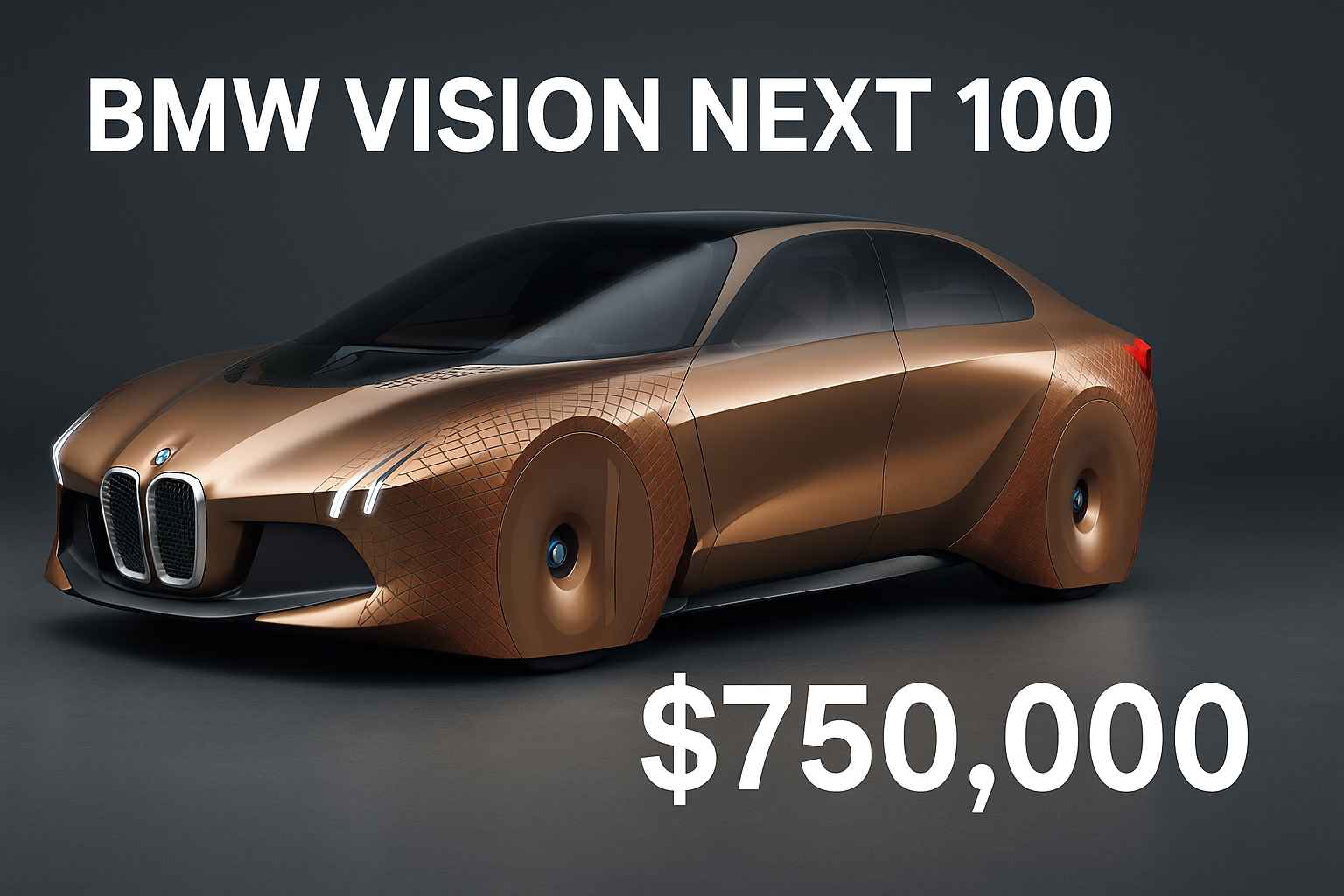The BMW Vision Next 100 is a concept car, created to mark BMW’s 100th anniversary and to project what mobility might look like in the decades ahead.
It’s not a production car you can buy—no showroom, no purchase price. It serves as a design and technology statement:
- It features two modes: Boost (augmented driving) and Ease (autonomous mode).
- It uses Alive Geometry — panels that dynamically adjust, and interior elements that shift their shapes.
- The design uses materials and aerodynamic tricks (closed wheel arches, reflective glass) that optimize efficiency and aesthetics.
So, the Vision Next 100 gives us a peek into BMW’s future direction, not a real car you can buy today.
Why There’s No Official Price?
Because it’s a concept, BMW never released a selling price. Concepts are created for exhibitions, idea exploration, and brand impact—not for mass consumer sale.
In general:
- Concept cars often involve bespoke parts, one-offs, expensive materials, and massive R&D cost.
- Their value is symbolic or artistic more than transactional.
- Even if someone built a replica, the cost would vary hugely depending on materials, electronics, and custom fabrication.
So asking “BMW Vision Next 100 price” is like asking “What did the Wright Brothers’ first flyer cost?” — it’s not meant for commercial sale.
What do we estimate?
If one day they made a limited production derived from the Vision Next 100, the cost would likely be astronomical — think several crores (₹) or equivalent dollars for a futuristic, tech-laden vehicle with advanced materials and AI/ autonomous features.
Hypothetical factors pushing the cost:
- Custom materials (carbon fiber, adaptive panels)
- Advanced electronics, sensors, AI, autonomous tech
- Adaptive interiors and reconfigurable geometry
- Low-scale manufacturing (no economies of scale)
All of this would put it in super-luxury / hypercar territory.
What the Vision Next 100 Represents?
- Created to celebrate BMW’s 100 years, the Vision Next 100 is symbolic of BMW’s future vision.
- It operates in two modes:
• Boost: driver in control with augmented assistance
• Ease: full autonomous takeover, interior becomes relaxation zone - It uses Alive Geometry, adaptive panels, and aerodynamic refinements like closed wheel arches in straight line driving.
- The interior is configurable and designed with futuristic materials—no leather, recyclable surfaces, flexible forms.
This is a display of ideas, not a car for roads yet.
Is There a Price? Why Not.
Because it’s a concept:
- BMW never intended to mass produce it, so no retail price.
- The design and technology are experimental; costs are abstract (R&D, prototyping, one-off parts).
- If someone attempted to build a real version, final cost would depend heavily on materials, electronics, and scale — possibly tens or hundreds of crores in Indian rupees.
What Would be the Price If it were Productized?
If a production model based on Vision Next 100 ever emerges, here’s what would drive the price skywards:
- Advanced autonomous systems, AI, sensors
- Custom body panels and dynamic geometry tech
- Low production scale, premium materials
- Luxury features and adaptive interiors
You’d see a vehicle priced in super-luxury / hypercar segment territory — far above conventional luxury sedans or EVs.
Summary for the Users:
- Use Vision Next 100 as inspiration and content tool: talk about future mobility, BMW’s direction, design languages.
- Clarify in your articles: it’s not for sale, so readers don’t get misled searching for a price.
- Use this piece to cluster with related future or concept scenario topics (BMW Vision i Next, Neue Klasse, concept EVs) to boost your Discover & SEO presence.

Automotive industry analyst with 3+ years of experience dissecting market trends, emerging technologies, and consumer insights. His expertise fuels data-driven perspectives on swagatswork.com, empowering professionals to navigate the evolving automotive landscape.
